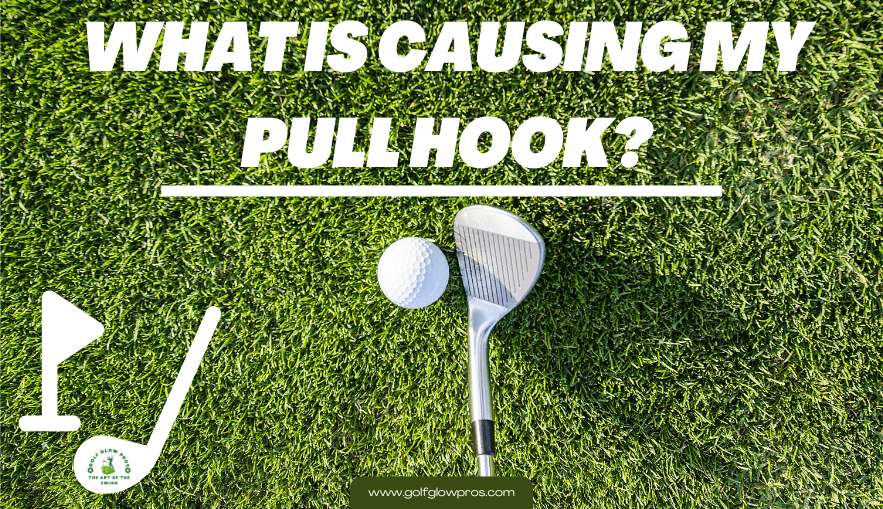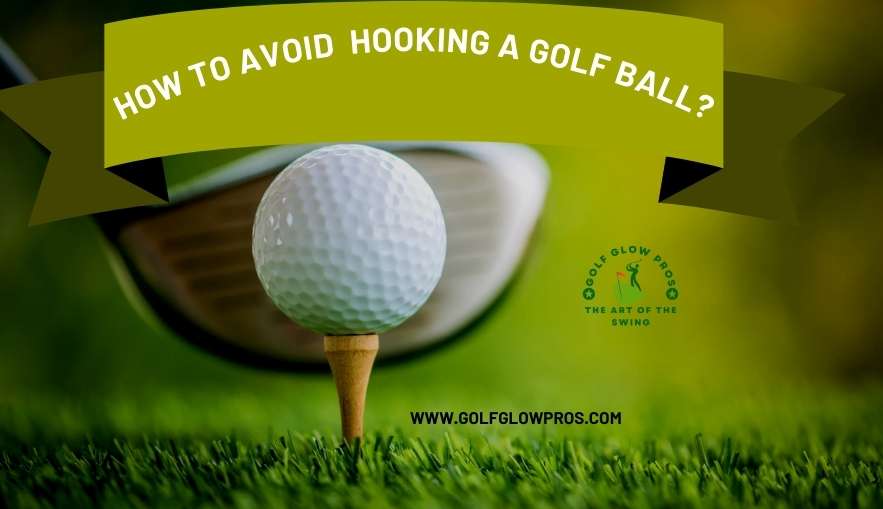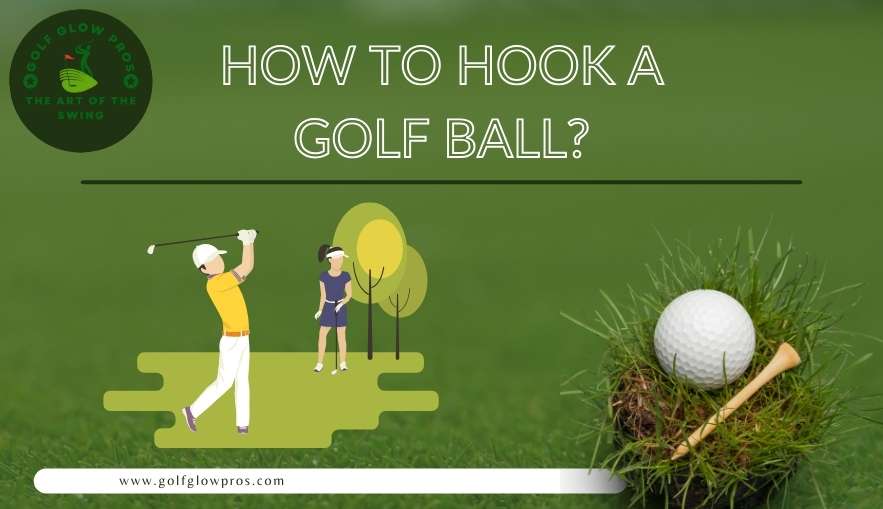How to hook a Golf Ball will be answered in today’s article. A few fundamentals must be understood in order to hook a golf ball. First, reposition your hold. If you are right-handed, turn your hands just a little bit to the right. By doing so, you can close the clubface at impact and increase your grip.
Think about your stance next. Place your shoulders, hips, and feet in line with your target’s right. An inside-out swing path is encouraged by this open stance.
Next, practice your swing route. Swing the club in an outward motion. This movement contributes to the ball’s right-to-left flight.
Check your clubface at impact as well. Make sure it’s closed a little. An inside-out path coupled with a closed clubface will result in a hook.
Finally, practice regularly. On the range, use these suggestions until they come naturally.
Recall that every golfer is unique. Make these adjustments to fit your swing.
How to Intentionally Hook a Golf Ball?
First, reposition your hold. With your hands on the club, slightly turn them to the right. At impact, this firm grip aids in closing the clubface.
Align your stance next. Take a small angle with your torso to the right of your aim. The arrangement encourages an inside-out swing path.
Next, concentrate on your swing. Be flowing as you start your backswing. As you swing down, keep your right elbow close to your body Hook a Golf Ball.
This generates the path that a hook needs, which is inside-out. Lastly, rotate your wrists till you make contact. By doing this, the clubface collapses and the hook is created.
Implement these steps. In due course, you’ll get the hang of the hook shot. Recall that a hook can be both strong and deceptive. Make good use of it!
How to Hook a Golf Ball Left Handed?
First, reposition your hold. Ensure that your left hand is positioned higher on the club. It encourages a hook.
Next, do a small backswing with the ball in your stance. At impact, this promotes a closed clubface Hook a Golf Ball.
After then, align your body with your target to the right. In this way, the ball can start right and curve left.
Now go ahead and swing. Pay attention to an inside-outside swing path. This produces the side spin that a hook requires.
And lastly, execute the plan correctly. Allow your wrists and hands to naturally rotate. This guarantees a full hook shot.
You’ll acquire the feel of it if you practice these steps. In numerous scenarios, hooking the ball might be advantageous. Keep up the practice, and enjoy yourself on the course!
Prevent Hooking a Golf Ball?
Verify your grasp first. Strong hands may result in a hook. Thus, maintain objectivity. Next, consider your posture. Maintain alignment in your shoulders, hips, and feet. Don’t too much close your posture either.
Consider your swing path now. Swing in line with your objective. Steer clear of going too inside-out. At impact, maintain a square clubface. This lessens the chance of the ball bending left.
Furthermore, manage your release. Avoid turning over your hands too soon. Work on releasing smoothly and evenly. Observe your tempo as well. Swing in a steady, well-balanced rhythm.
Lastly, obtain input. To verify your form, use a mirror or a video. Make little tweaks and practice frequently. You’ll notice less hooks and an improvement soon.
What is Causing My Pull Hook?
In golf, a pull hook can be annoying. It stems from a variety of swing problems. Your clubface closes at impact, first of all. This indicates the remaining clubface points of your objective.
Secondly, your swing route goes from the exterior to the interior. This indicates that you’re going too far. The ball begins to curve left and continues to curve left as a result.

Your grip could be another factor. The clubface can be closed with a firm grip. Your position can perhaps be too restrictive. An out-to-in swing path results from this.
Finally, stress can interfere with your swing. Your hands might flip the clubface closed if you’re nervous Hook a Golf Ball. Then You will know about How to Hook a Golf Ball.
Check your grasp now. Properly aim your clubface. Ascertain that the swing path is inside-out. Remain at ease. These modifications will allow you to remove the pull hook.
Why am I Hitting a Big Draw Hook?
Reaching a large draw hook can be annoying. Let’s investigate the cause of it.
Verify your grasp first. Strong grips frequently result in hooks. To make your grip weaker, try slightly shifting your hands.
Next, consider your posture. You will swing inside-out by nature if your feet are too closed, which will result in a hook. Take a slightly more open attitude to fix this.
Additionally, consider your clubface. If it’s closed at impact, the ball will hook. Maintaining a square clubface during your swing is important.
It also matters how you swing. An oversized inside-out trajectory will result in a hook. To make your shots straighter, aim for a more neutral trajectory.
Finally, be mindful of your release. Excessive hand rotation can result in hooks. To keep the ball on goal, practice releasing the ball with control.
You can have a straighter, more consistent game and less massive draw hooks by adjusting these factors how to hook a Golf Ball.
What is the Difference Between a Snap Hook and a Pull Hook?
For right-handed golfers, a snap hook or a pull hook both cause the ball to deviate left. They do, however, differ greatly.
When the clubface shuts suddenly at impact, a snap hook occurs. The ball makes a stunning hook as it drops fast to the left. Usually, this follows a very quick, forceful swing.
Conversely, a pull hook initiates from the left of the target. The ball subsequently makes another leftward turn. A closed clubface in conjunction with an outside-to-in swing path frequently results in this shot.
In summary, a snap hook primarily consists of an abrupt, acute left turn. A pull hook curves leftward and then leftward again. Although both shots can be annoying, understanding their distinctions makes it easier to fix them.
How Do I Stop Hitting Snap Hooks with Irons?
You should first examine your grip in order to cease hitting snap hooks with irons. Maintain a neutral grip on the club—not too firm or too loose. Next, ensure that you are positioned correctly. Keep your feet shoulder-width apart from a body that is in line with the goal.
Now pay attention to your swing route. Frequently, an inside-to-outside swing path results in a snap hook. Try swinging further along the target line to correct this. Maintain your clubface square at impact as well. Hooks result from a clubface that is too closed.
Remember to keep your pace. Take your time and swing fluidly when you descend. To gain more control, practice finishing with balance.
Finally, think about your gear. Making use of the proper clubhead and shaft flex can have a significant impact. Get fitted by a professional if necessary.
You can enjoy more consistent iron strokes and avoid hitting snap hooks by making these tweaks.
Why Have I Started Hooking the Ball?
It can be annoying when you start hooking the ball. Let us investigate some possible reasons for this. To start with, you may be holding the club too tightly. Relax a little. Verify your grip posture as well. For right-handed golfers, your hands can be turning too much to the right.
Your position can be another factor. Are your shoulders, hips, and feet in the proper alignment? To be sure, check this twice. Your swing route may also be incorrect. Typically, an inside-out swing route results in hooks.
Additionally, remember to pay attention to your follow-through. Hooks can result from a closed clubface at impact. Maintain the clubface square by practicing. Lastly, think about your mental strategy. Overthinking or stress can interfere with your swing.
How to Stop a Golf Ball from Hooking?
It’s not always hard to stop a golf ball from hooking. Verify your grasp first. Verify that it isn’t overpowering. Next, change your position. If you are right-handed, aim slightly to the right. Maintain a shoulder-to-target line alignment.
Check out your swing now. Make an effort to swing more straight. On the downswing, try not to get too inside. Maintain your clubface square at impact as well. This lessens the chance of the ball bending left.
Remember to always follow through. Make it balanced and silky. And lastly, practice frequently. Modest changes can have a significant impact. You are capable of this!
How to Avoid Hooking a Golf Ball?
Take heed of these easy golf ball hooking prevention tips. Verify your grasp first. A firm grasp may result in hooks. Use a neutral grip in its place. Think about your stance next. Maintain a shoulder-width distance between your feet and align your body with the objective.
Observe your swing path as well. A swing from the inside to the outside is a typical error. Try to swing straight or just a little bit from the outside in. Be mindful of your clubface. Verify that it is square when it hits. A clubface that is open might lessen hooks.

Practice appropriate weight distribution as well. Maintain an even weight distribution over both feet. Try not to lean too much on your rear foot when you swing. Finally, maintain your composure. Poor swings can be caused by tension.
You can raise your game and prevent hooking the golf ball by using these techniques Hook a Golf Ball. Now you have any question about how to hook a Golf Ball.












